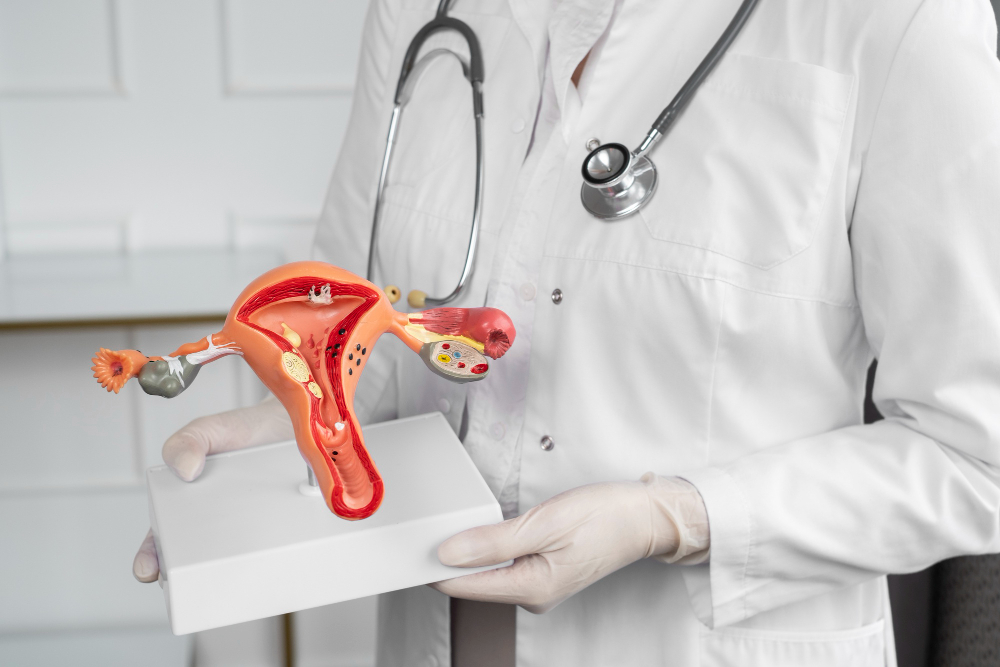
What is Laparoscopic Vaginoplasty?
Laparoscopic vaginoplasty is a surgical procedure performed to reconstruct or create a vagina using minimally invasive laparoscopic techniques. This procedure is typically performed for women with vaginal agenesis (absent vagina) or other congenital abnormalities of the female reproductive tract. Laparoscopic vaginoplasty aims to create a functional vagina to improve sexual function, relieve symptoms, and enhance quality of life.
How is Laparoscopic Vaginoplasty Performed?
Laparoscopic vaginoplasty is performed under general anesthesia. During the procedure, small incisions are made in the abdomen, and a laparoscope (a thin, flexible tube with a camera) is inserted to visualize the pelvic organs and surrounding structures. Specialized instruments are used to create a space between the bladder and rectum and to fashion a neovagina (new vagina) using tissue grafts or other materials. The procedure may be combined with other techniques such as tissue flaps or skin grafts to enhance vaginal depth and function.
Who is a Candidate for Laparoscopic Vaginoplasty?
Women with vaginal agenesis (absent vagina) or other congenital abnormalities of the female reproductive tract may be candidates for laparoscopic vaginoplasty. A thorough evaluation by a gynecologic surgeon or reproductive specialist is necessary to determine the underlying cause of the condition and assess the patient's suitability for surgery. Factors such as the patient's overall health, reproductive goals, and personal preferences will also be considered in the decision-making process.
What is the Recovery Process Like After Laparoscopic Vaginoplasty?
The recovery process after laparoscopic vaginoplasty varies depending on individual healing factors and the specific techniques used during the procedure. In general, patients can expect to experience some discomfort, swelling, or vaginal discharge in the days following surgery. Pain medication, antibiotics, and instructions for caring for the surgical site will be provided to promote healing and prevent complications. Most patients can resume normal activities within a few weeks after laparoscopic vaginoplasty, although sexual intercourse may be restricted for a period of time until healing is complete.
What is the procedure after surgery?
Rest and Limit Activity: Avoid strenuous activities, heavy lifting, and vigorous exercise for the recommended period.
Keep the Area Clean: Gently clean the surgical area with water and mild soap as directed by your surgeon. Pat the area dry with a clean towel, and avoid rubbing or scrubbing.
Take Prescribed Medications: Take any prescribed pain medications, antibiotics, or other medications as instructed by your surgeon to manage pain and prevent infection.
Avoid Sexual Activity: Refrain from sexual intercourse and other sexual activities until your surgeon advises it is safe to do so. This typically takes several weeks to a month or more, depending on individual healing.
Wear Loose Clothing: Wear loose-fitting clothing, preferably cotton underwear, to minimize friction and promote airflow to the surgical area.
Attend Follow-Up Appointments: Keep all scheduled follow-up appointments with your surgeon to monitor your healing progress and address any concerns or complications promptly.
Avoid Tampons and Menstrual Cups : Refrain from using tampons and menstrual cups during your recovery period to prevent irritation and infection.
Stay Hydrated and Eat Nutritious Foods: Drink plenty of water and eat a balanced diet rich in vitamins and nutrients to support healing and boost your immune system.
Why Choose Samarpan Hospital for Laparoscopic Vaginoplasty?
Samarpan Hospital in Hisar, Haryana, offers expert care and advanced treatment options for women requiring laparoscopic vaginoplasty. Our team of experienced gynecologic surgeons, reproductive specialists, and supportive care professionals is dedicated to providing personalized care and optimal outcomes for each patient. With state-of-the-art facilities, advanced laparoscopic technology, and a patient-centered approach, Samarpan Hospital is committed to delivering the highest quality of care and improving the lives of women with vaginal agenesis or other congenital abnormalities.
Services
- Adenomyomectomy
- Cancer Surgery
- ECTOPIC SURGERY
- ENDOMETRIAL CANCER
- Endometriosis
- HYSTERECTOMY
- Infertility Surgery
- Isthmocele Repair
- LAPROSCOPIC INTERVAL CERVICAL ENCIRCLAGE
- Myomectomy Surgery
- Ovarian Cystectomy
- Prolapse Surgery
- RECANNALIZATION ( TUBOPLASTY )
- Reversal of family planning
- Total Laparoscopic Hysterectomy
- TUBECTOMY
- Urine Incontinence
- Vaginoplasty